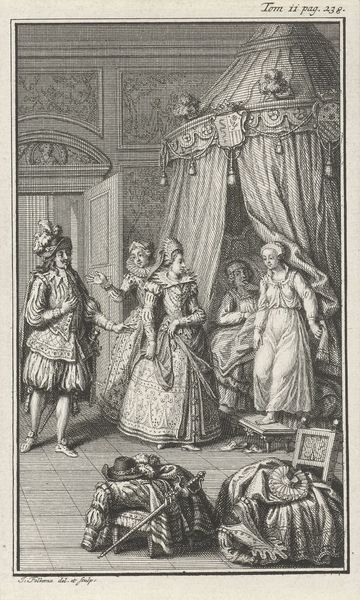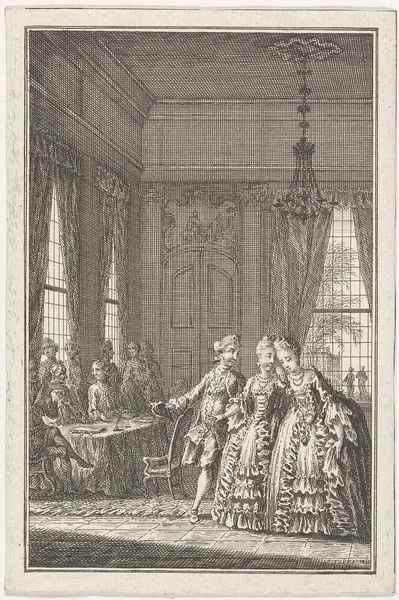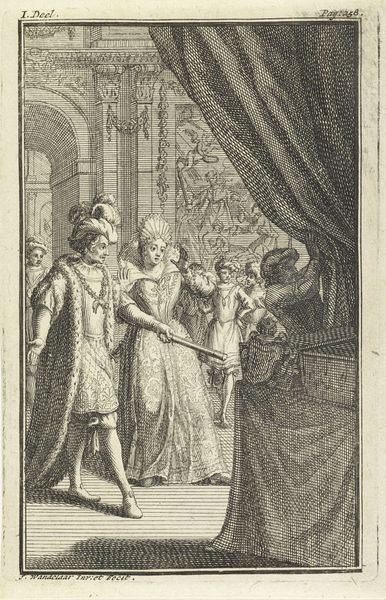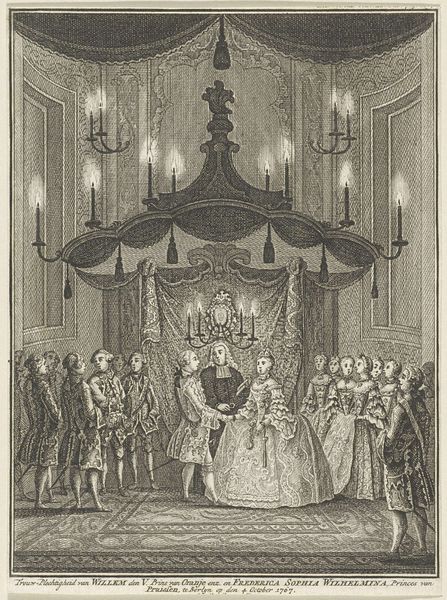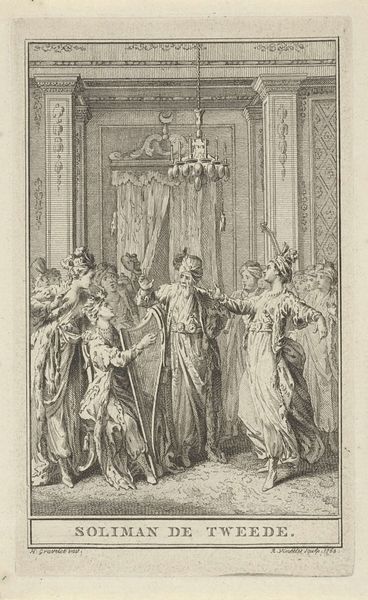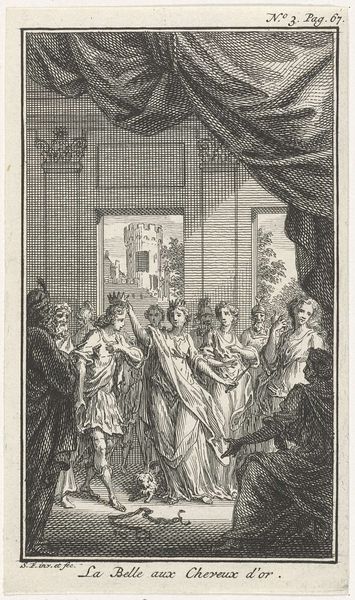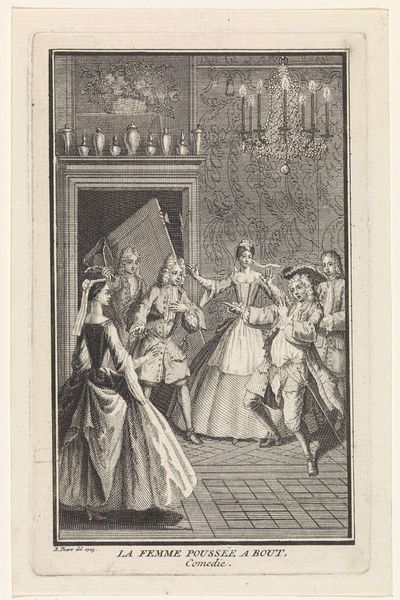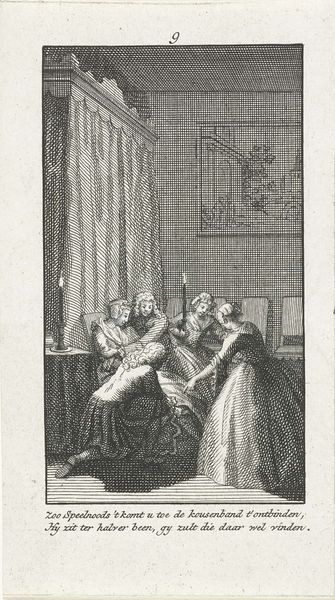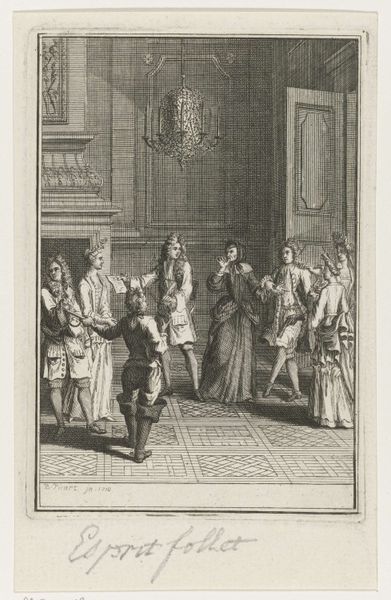
engraving
#
portrait
#
baroque
#
dog
#
figuration
#
line
#
genre-painting
#
history-painting
#
engraving
Dimensions: height 139 mm, width 86 mm
Copyright: Rijks Museum: Open Domain
Editor: This is "Gezelschap met hond in een vertrek" which roughly translates to "Company with dog in a room." It’s an engraving from sometime between 1722 and 1784, by Simon Fokke. It's packed with people, all these intricate patterns and a slightly surreal, theatrical quality to it. What do you see in this piece? Curator: I am immediately drawn to the symbolism of the game being played – blind man’s bluff, isn't it? This is so much more than a snapshot of amusement; blindness speaks volumes. Consider what it meant during that period. To me, it’s a metaphor for the frivolous ignorance of the aristocracy, blind to the societal shifts brewing around them. Notice how they’re arranged: confined to an interior, lavishly ornamented. The room itself, a gilded cage of sorts. Don't you think? Editor: A gilded cage, yes! And the dog, is that part of the symbolism, too? Curator: Ah, the dog. Loyalty, yes, but consider also: dependence. The dog relies on its mistress. Is the mistress aware of what she depends on? Now, follow the gaze—everyone seems to be looking inward, a closed circuit of self-referentiality. Even the light, those candle flames—are they guiding or merely decorative? What do those tiny flames represent for you? Editor: It's like… they’re illuminating only themselves, and not the world outside. The excess becomes a kind of blindness, like you said. Curator: Precisely! Fokke's work cleverly employs familiar images to construct an argument about moral decadence. It’s all quite unsettling once you decode the initial charm. Editor: I’ll never look at a Baroque interior the same way again. The image seemed harmless initially, but it has all this hidden significance. Curator: Indeed. Symbols speak if we lend an ear – or rather, an eye informed by history and human psychology. Art invites us to play detective with cultural memory.
Comments
No comments
Be the first to comment and join the conversation on the ultimate creative platform.

